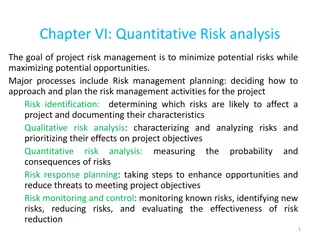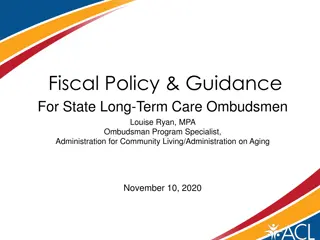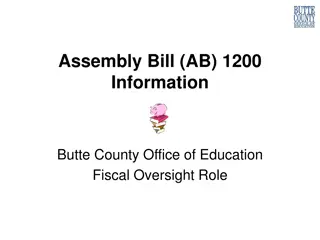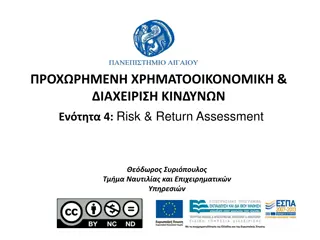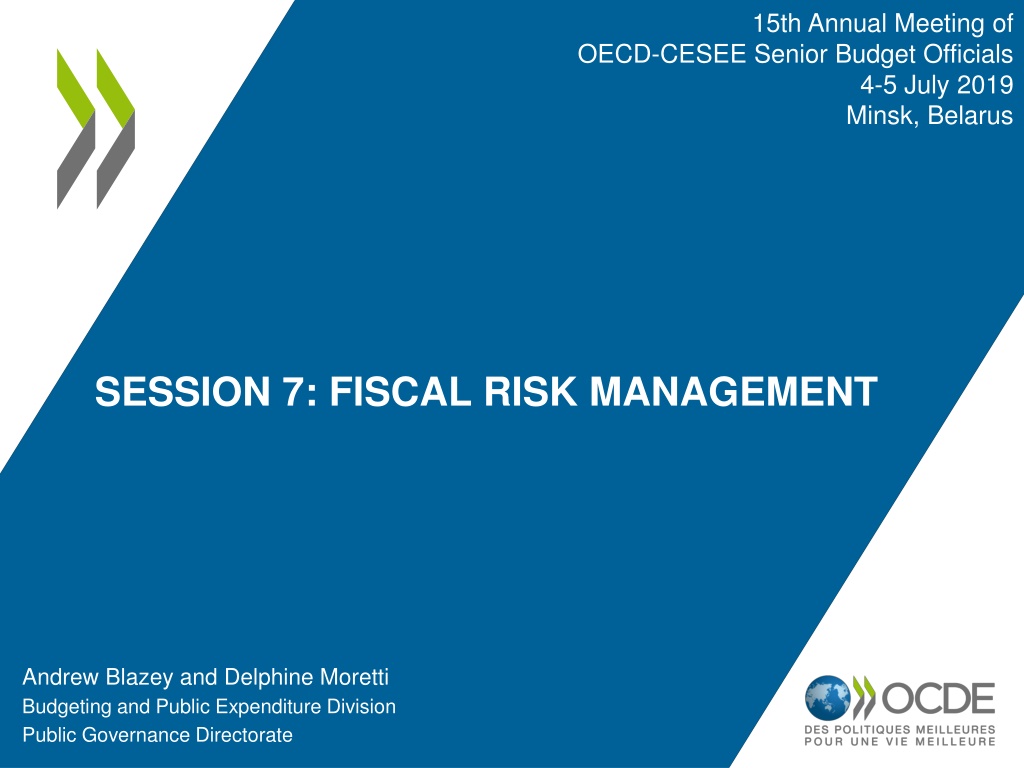
Fiscal Risk Management in OECD Countries
Explore the insights from the 15th Annual Meeting of OECD-CESEE Senior Budget Officials on Fiscal Risk Management, discussing identification, mitigation, and management of fiscal risks in OECD countries. Learn about the criteria guiding risk identification, potential developments considered, and the approaches recommended to effectively manage fiscal risks.
Download Presentation

Please find below an Image/Link to download the presentation.
The content on the website is provided AS IS for your information and personal use only. It may not be sold, licensed, or shared on other websites without obtaining consent from the author. If you encounter any issues during the download, it is possible that the publisher has removed the file from their server.
You are allowed to download the files provided on this website for personal or commercial use, subject to the condition that they are used lawfully. All files are the property of their respective owners.
The content on the website is provided AS IS for your information and personal use only. It may not be sold, licensed, or shared on other websites without obtaining consent from the author.
E N D
Presentation Transcript
15th Annual Meeting of OECD-CESEE Senior Budget Officials 4-5 July 2019 Minsk, Belarus SESSION 7: FISCAL RISK MANAGEMENT Andrew Blazey and Delphine Moretti Budgeting and Public Expenditure Division Public Governance Directorate
Contents 1. Fiscal risk management in the OECD 2. Recent OECD studies on mitigating fiscal risks Healthcare Natural disasters 2
Fiscal Risk Management 32% of OECD countries have defined criteria for guiding the identification of fiscal risks. Risks Risks Forecasting Disclosure identification measurement Prevention Mitigation Provision Reserve Analysis Fiscal Policy Legislation specifies the government fiscal risk policy in only one country. 4
When is a risk a fiscal risk? Are all potential developments identified? What is included in the forecast? Interest rates' increase Unsustainable debt level Recession Financial crisis Lower ouput growth Additional mandatory spending (welfare, health) Technological changes Ageing Natural disaster(s) Climate change Short-Term Medium-Term Long-Term What is the time horizon considered? 5
Which fiscal risks are identified by OECD countries? 6 Source: OECD (2018), OECD Budget Practices and Procedures Survey, Question 77, OECD, Paris. StatLink 2 http://dx.doi.org/10.1787/888933946704
How to manage fiscal risks? Prudent fiscal policy Prevention Mitigation Headroom Short-Term Provisions No-bail out provisions Risk Long-Term Reserves Hedging specific Regulation Source: OECD Recommendations of the Council on Budgetary Governance and Coping with fiscal risks, Journal on Budgeting, 2014). 7
What are the approaches in OECD countries? Prevention/Mitigation 8 Source: Adapted from Questions 12a and 79 of the OECD Budget Practices and Procedures Survey.
RECENT OECD STUDIES ON MITIGATING FISCAL RISKS 9
Health spending and natural disasters are short to medium-term fiscal risks likely to increase over the long-term due to ageing and climate change. 10
Are health spending projections policy relevant? OECD projection results show that across all scenarios, health spending will increase in per capita terms and as a share of GDP. The OECD proposes scenarios based on key drivers for health spending: enhanced/low productivity; cost control/pressures; life- style policies. The extent of this increase will depend on the quality of decision-making and the monitoring of risks around health care costs. Projections must be devised to be as policy relevant as possible (i.e. estimate the effects of a range of policy options). 11
Projections for health spending as a share of GDP Full range of OECD scenarios, OECD average Source: OECD (2018), Health Spending Projections to 2030: New results based on a revised OECD methodology, https://dx.doi.org/10.1787/5667f23d-en 12
Can natural disaster risks be measured comprehensively? Expenditures Revenue losses Direct payments to populations Reductions in tax bases Reconstructions of public infrastructure Deliberate tax cuts Economic stimulus Transfers to Hospitals, LGs, SOEs 13
How to mitigate natural disaster risks? Analysis of the risks in the fiscal risks statement. Example of good practices: Clear cost-sharing mechanisms across levels of government; Measurement of the impacts of natural disasters as part of stress tests, to inform the development of the fiscal strategy. Incentives for non-governmental stakeholders to reduce disaster risks ahead of disasters; Understanding of the key drivers for cost pressures allows in turn more effective mitigation strategies. Ceiling on disaster recovery costs and development of financial strategies to cover for residual risks. 14
Concluding thoughts The measurement of risk is a key component of any mitigation strategy: the method often needs to be tailored to the fiscal risk considered. When measurement is policy-relevant, (non-fiscal) policy levers can be more easily identified to mitigate specific fiscal risks. Measuring and mitigating short-term fiscal risks (e.g. natural disasters) is a step towards better managing longer-term sustainability challenges (e.g. climate change). 15
OECD Recommendations and Surveys OECD recommendations and research: Disclosing risks of deviations from government economic forecasts as key fiscal risks (Best Practices for Budget Transparency, 2002); Identifying, classifying, quantifying and mitigating fiscal risks (Principles of Budgetary Governance, 2012). Fiscal risks management in OECD countries: Fiscal Risks Mini-Survey, 2014; Budget Practices and Procedures Survey, 2018. 16
Thank you http://www.oecd.org/gov/budgeting/ Andrew Blazey Andrew.BLAZEY@oecd.org Ana Maria Ruiz Rivadeneira AnaMaria.Ruiz@oecd.org Budgeting and Public Expenditure




